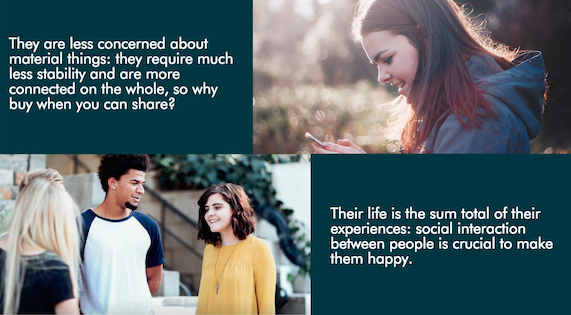It’s Not About Millennials

- Estefania Gual, Business Analyst at Strands
- 19.04.2017 09:30 am digital banking , Traditional banks
As of 2015, the generation known as ‘millennials’ – those born between 1981 and 2005 - is the largest generation in history, surpassing the so-called Baby Boomers, one of the most important generations of our time, according to Pew Research Center. In America, there are currently more than 80 million millennials, the oldest of which will turn 36 this year, and they are expected to generate 46% of all U.S income by 2025.
Apart from being powerful in numbers, there is something that makes them very special: they are the first completely digital generation. And although this may be just an interpretation, I would say that this digitalization has dominated the way they interact in general, both with people and information.
The Millennial’s upbringing revolved around sharing and receiving information from others through digital channels. Now, what had originally seemed distant for previous generations is firmly within everyone’s reach, bringing the world, quite literally, to our fingertips.
The combination of technological innovation with a generation whose experiences are vastly different than those before them, has meant millennials have an entirely different set of values:

The list doesn’t end there, but the common denominator is clear: these are things that make them happy; what makes a millennial tick.
Banking the unbanked
Since last century, banks have been the middle-man, using branches as their main communication channel between customer and services. Their core business was based on understanding customer needs through personal contact, meaning branches were the first indicator of a social change in banking.
Nowadays, customers simply do not require the same level of contact with their branch; banks no longer know their customers to the same degree and lose considerably more business opportunities as a result.
Startups and ‘neobanks’ such as Simple, Moven and GoBank in the United States or Number26, Fidor and mBank in Europe, seem to have picked up on this shift in mindset much more rapidly than traditional banks. Some of them are all-in, branchless mobile banks, whilst others have bypassed the banking license and gone for a non-bank, customer-relationship focus. Bigger, better-known banks, though reactive rather than proactive, did not delay in stepping up to the plate, and acquired some of the smaller financial institutions mentioned above.
Pivot or persevere? The key to success
To fully understand this, we need to go back to basics and analyze banks’ core business.
Although banks develop and provide an infinite number of services, the fundamentals of banking, and ultimately what a customer expects their bank to do for them above all else, is:
- To be able to receive salary payment
- To avoid paying with cash
Ultimately, needs may be covered with several different banking products, but one simple option would be a single pre-paid card.
Receiving Salary Payment
It is common nowadays for people to change job every 3 years, and increasingly abroad. With a job and a contract comes a need for a bank account in which to receive your salary, not necessarily easy from a foreign country. Why do banks not offer pre-paid cards to companies? This could be part of the onboarding process for each new employee, and with relatively little, the result is a happy customer and a problem solved.
Avoid paying with cash
We don’t tend to carry any one device with us at all times. Yes, we are inclined to have our phones with us (for now), so if technology already allows us to make payments using our smartphones, why are banks not focusing their efforts on building a win-win situation with all merchants?
The customer would appreciate being able to forget about having to carry cash on their person, and not even having to bring a wallet with them when they go out, but rather have all you need for payments right in the palm of your hand on your smartphone.
This may not be the most optimal user experience (but even if it were, that’s not the most important factor here), but again, the end result is a bank product that solves a problem and caters to their customers’ needs.
Banks need to understand what differentiates them from the competition, hone in on that and eliminate friction between end-users. It’s not about millennials; it is about making the essence of your business grow at the same rate as people evolve. And for that, you need to build a flexible enough structure to pivot and adapt at the right time, even if you are a bank. Especially if you are a bank.
This article originally apperead on blog.strands.com



















